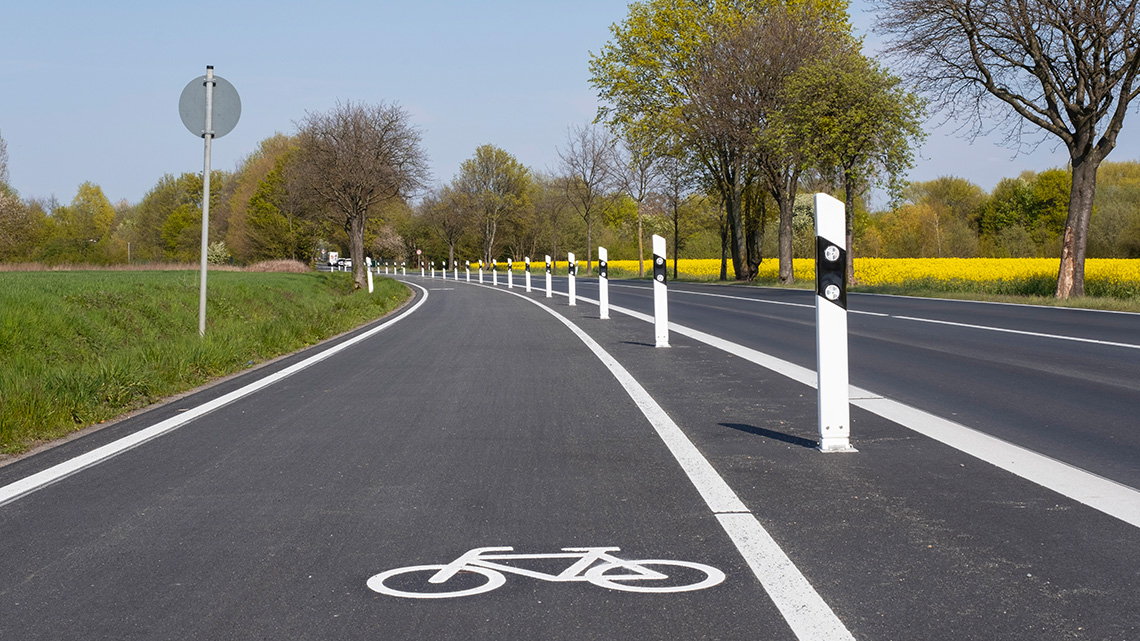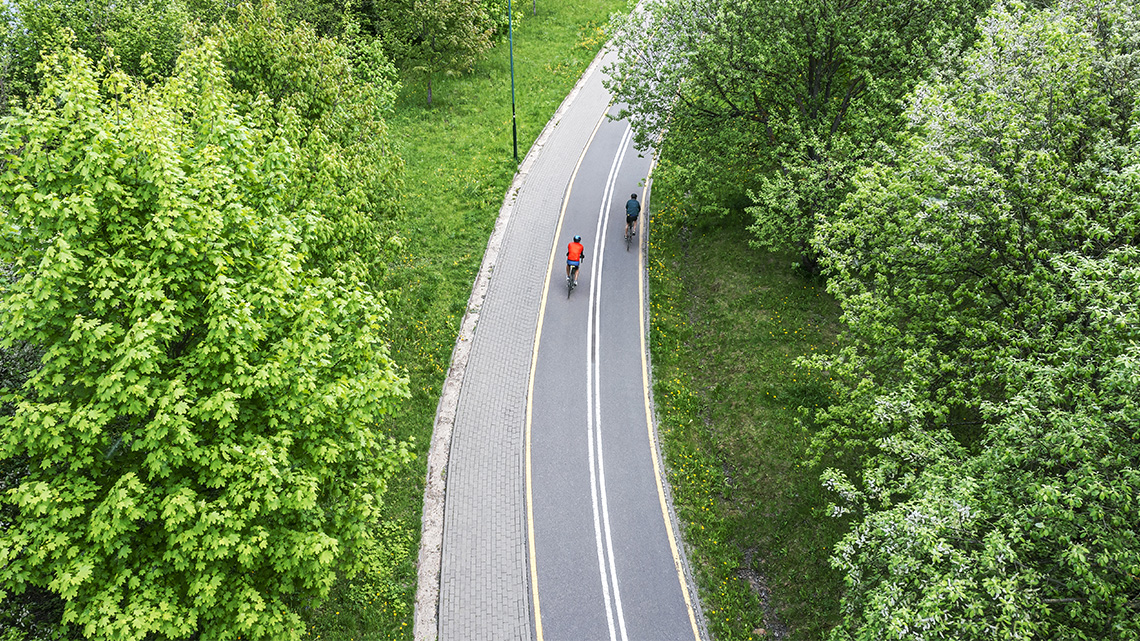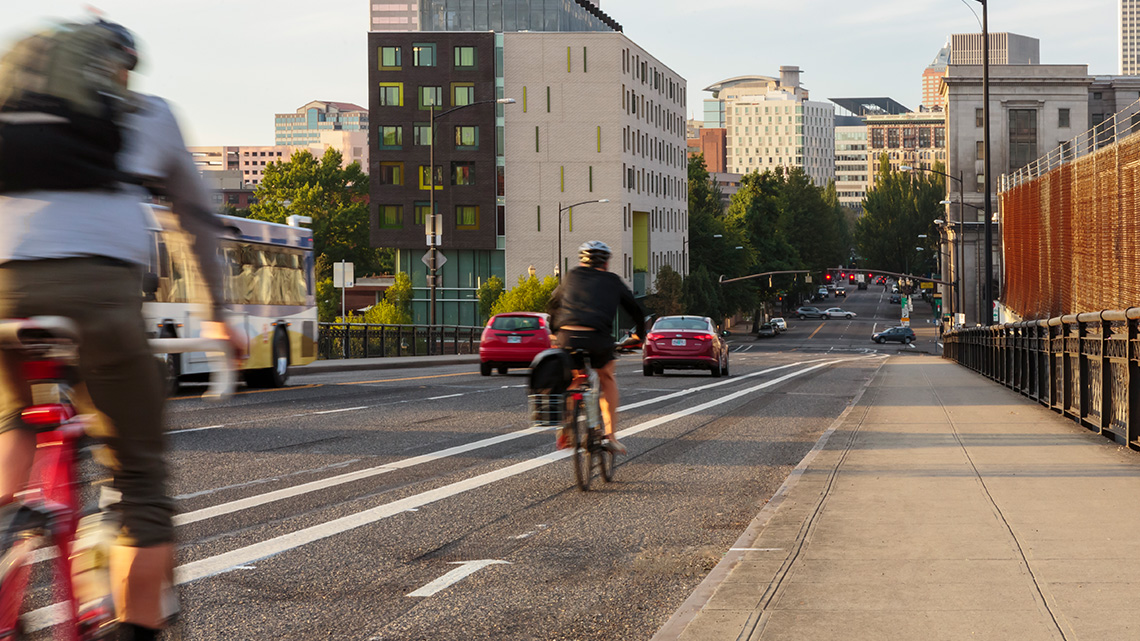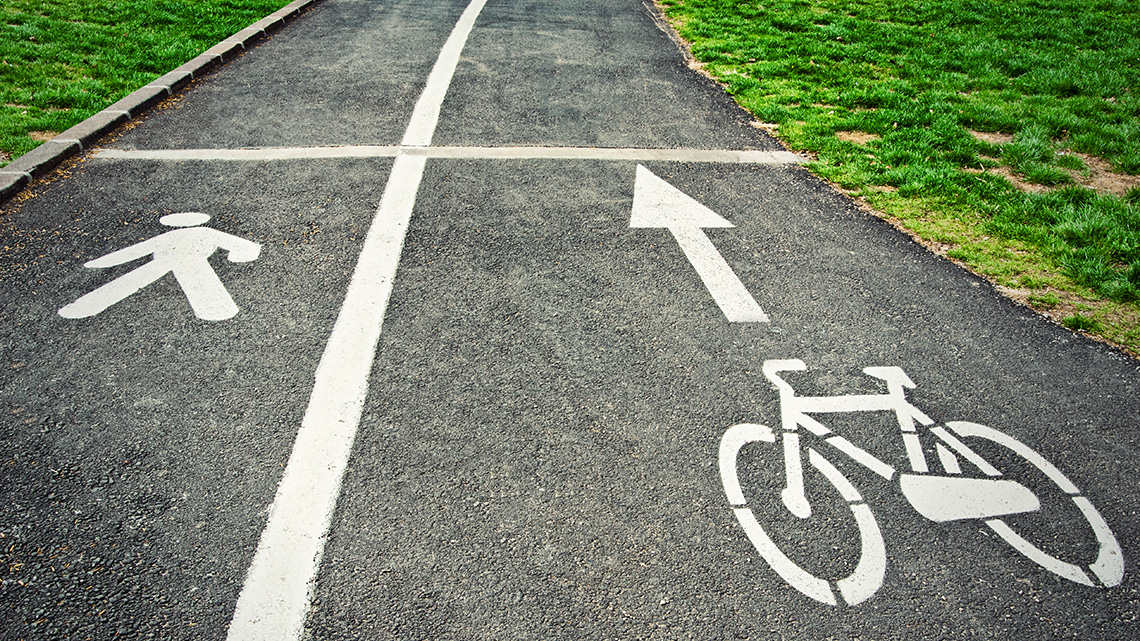Minds On
Cycle-friendly communities
Explore the following images of cycle-friendly communities around the world and consider the following questions.
- What do you notice about the way the community designed this space?
- What is similar and/or different about each image?
Image 1: There is a lane to the left of a two-lane road that is divided from the road using posts. There are white lines painted onto the asphalt on either side of the lane with an outline of a bicycle painted onto the road. Image 2: There is a two-lane path with grass on either side of the path and trees lining the path on both sides. There are light posts along the path. There are two people on bikes, riding along the path in the same direction on both sides of the path. Image 3: There are two cyclists riding on a main road. There are two solid white lines painted down the road to the left of their bicycles. There is a sidewalk on the other side of their lane. There is an outline of a bicycle painted in the lane with an arrow pointing in one direction. There are cars in the other lanes to their left, driving in the same direction. Image 4: There is an asphalt path with a white line painted down the centre. On one side is an outline of a person and on the other side is an outline of a bicycle with an arrow pointing in one direction.
Action
What makes it “cycle-friendly?”
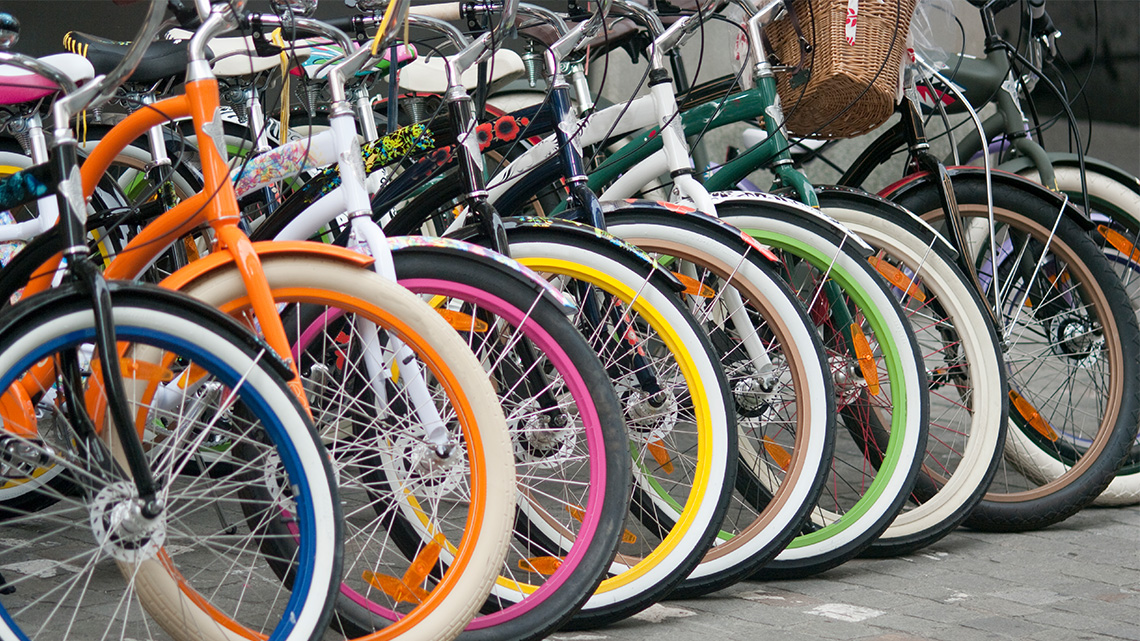
Cycling is a mode of transportation that has been popular since the 1890s. Today, more and more communities around the world are becoming cycle friendly.
Press ‘Definition’ to access a description of cycle-friendly community.
Cycle-friendly community: A community that provides support to cycling as a means of transportation, providing safe cycling routes and encouraging members of the community to cycle for recreation and transportation.
Cycling is an active, healthy way to travel from one place to another and it is more environmentally friendly than driving.
As more community members use cycling as a means of transportation, communities are becoming more “cycle-friendly”. This means that they are creating safer spaces for cyclists. Cycle lanes are less expensive and require less maintenance than highways. Cycles take up less space than larger vehicles and need less space for parking.
There are many cities around the world that have been cycle-friendly for years. Let’s explore some of these cities and what makes them cycle-friendly.
As you explore these cycle-friendly cities, consider:
- what makes cycling safe in each city
- the amount of people who travel by cycle compared to how many people travel by car or van
- what makes the experience positive for cyclists in each city
Press the following tabs to learn about cycle-friendly cities.
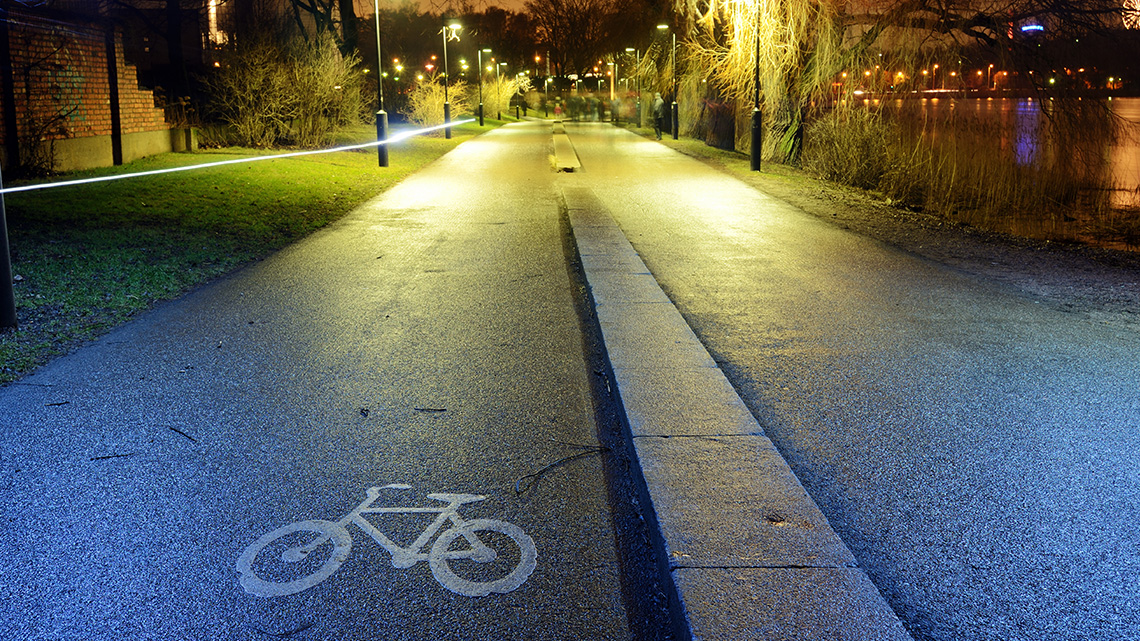
Helsinki, Finland has more than 1,300km of cycling paths, lanes, and spaces. The city allows people to bring their cycles for free onto public trains and the paths are plowed in the winter months. In addition, there are more than 150 bike share locations (places to borrow city bikes). More and more hotels in the city have spaces to store cycles and information about tours and repair shops. 74% of people who live in this city feel safe cycling here due to the different kinds of cycle-friendly initiatives.
The city is hoping to have 20% of residents choosing cycling as their main means of transportation by 2035.
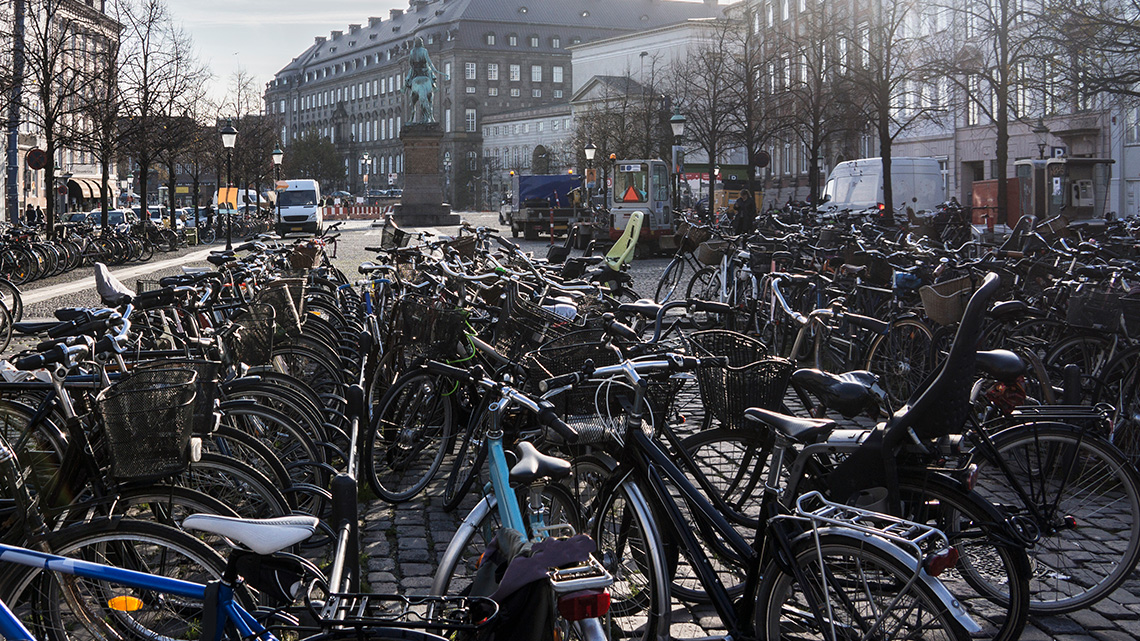
Copenhagen is considered by many to be the most cycle friendly city in the world! 49% of those who live in Copenhagen cycle to work. Every day, over 40,000 people cycle through the city. There are over 390km of cycle lanes in the city. There is even a “Super Cycle Highway” which connects Copenhagen to a nearby town. Along the cycle highway there are stations with air pumps, safe intersections and traffic lights that are timed to average cycling speeds.
97% of residents of Copenhagen feel safe when cycling. Throughout the city there are painted lanes for cycling, separated cycle tracks, and routes in green spaces for cycling. Speed limits for cars and trucks are reduced for cycling safety as well.
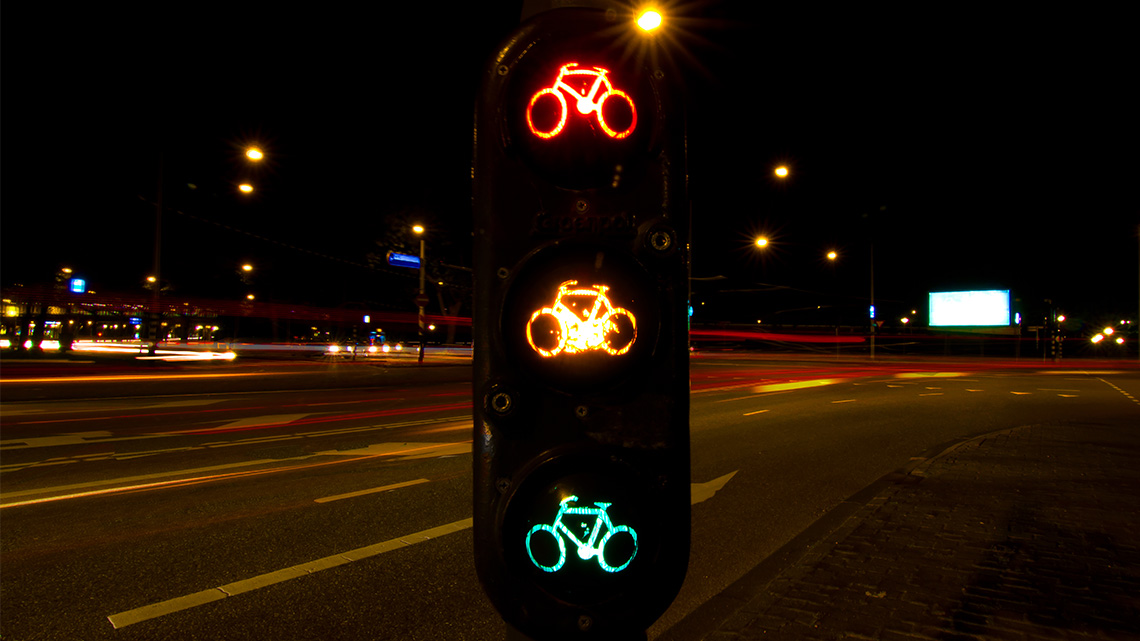
There are over 22 million bicycles in Amsterdam! That means that there are more bicycles than people. Amsterdam is a safe city to cycle. One of the reasons is due to the fact that the landscape throughout the city is quite flat. The city also has special traffic lights for cyclists and paths both dedicated to cycling and paths dedicated to pedestrian traffic as well. There are many parking spaces for cycles and even a bike ramp at the central train station.
There are over 500km of dedicated cycling paths and lanes throughout the city. There are almost 2 million e-Bikes (electric bikes) on the road as well. Overall, 25% of those who live in the city cycle instead of drive.
Use your learning to match each statistic to the cycle-friendly city.
What are three ways that a city or community can support cyclists and make them feel safe while cycling as a means of transportation?
Record your answer in a method of your choice.
Your turn!
All three of the cities explored are found in Europe. You will now have a chance to learn more about another cycle friendly city or town in another area of the world using research skills.
Before learning more about these cities and investigating a city of your own, explore this video that explains the skills involved in the Scientific Research Process.
Choose one of the cities on the list or research a city or community of your own choice.
- Tokyo, Japan
- Taipei, Taiwan
- Melbourne, Australia
- Bogota, Columbia
- Montreal, Canada
- Cape Town, South Africa
When you decide on your city, respond to the following questions.
- What makes cycling safe in this city?
- How many people travel by cycle compared to how many people travel by car or van?
- What makes the experience positive for cyclists in that city?
Complete the City Analysis in your notebook or using the following fillable and printable document. If you would like, you can use speech-to-text or audio recording tools to record your thoughts.
| City: | |
|
What makes cycling safe in this city? |
|
|
What makes the experience positive for cyclists in that city? |
|
|
How many people travel by cycle compared to how many people travel by car or van? |
|
| Additional Notes: | |
Press the ‘Activity’ button to access City Analysis.
Benefits of cycling
Health benefits
There are various benefits for communities to be cycle-friendly.
These include environmental benefits as well as health benefits. Let’s consider health benefits first.
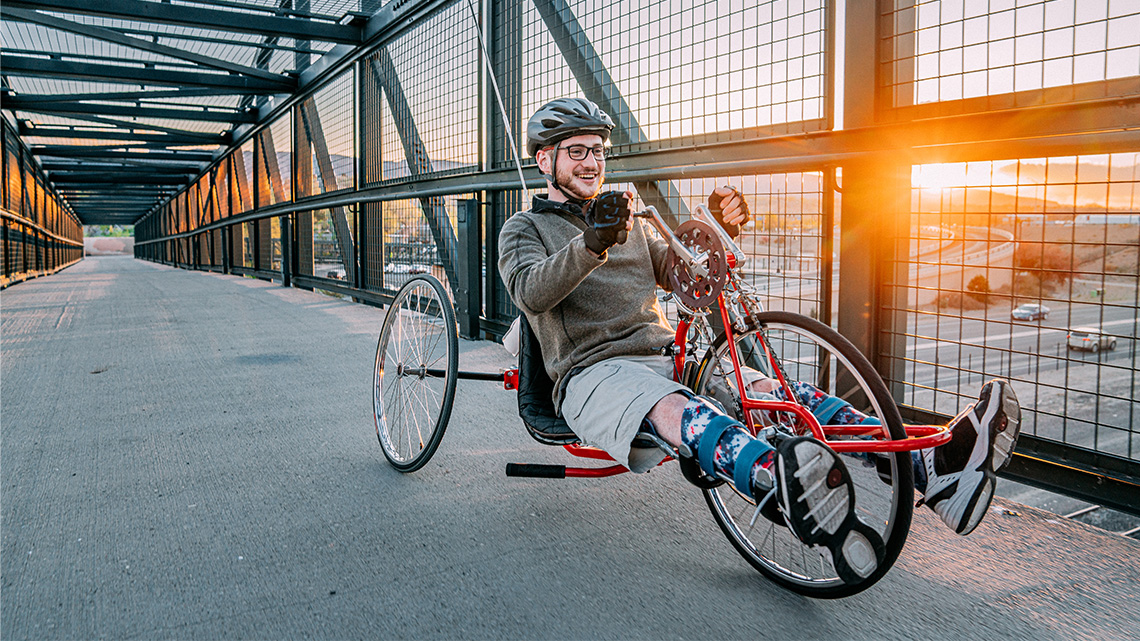
A cyclist on a three-wheel cycle. There is one front wheel and two back wheels. The seat has a back rest. The pedals are hand controlled and the legs are resting on bars on either side of the front wheel.
Cycling is a strong cardiovascular workout and helps to strengthen muscles in the back, legs, hips, and ankles.
Cycling can improve a person’s balance. It can be a factor towards positive mental health and creative thinking. Because it is a cardiovascular exercise that gets the heart pumping, it can also help people sleep better and even improve memory.
Cycling can increase a person’s energy and lower levels of stress, which is common with exercise of this kind.
Cycling communities produce calmer and safer roads, which reduce accidents.
Press ‘Definition’ to access a description of a cardiovascular workout.
Cardiovascular workout: Any type of activity that works to increase the heart rate.
Learning check!
For each sentence, select the missing word from the drop-down menu.
Environmental benefits of cycling

Cycling can help protect biodiversity. Cycling creates less noise and less air pollution. There is also less need for pavement with cycling which means that there is more green space left untouched.
Cycling as a means of transportation allows for less energy being used for a few reasons. First, it takes less energy for a company to manufacture bikes than it does to manufacture cars, vans, and trucks in a factory setting. It also takes less energy, such as fossil fuels, to power a cycle.
As a means of transportation, there are less carbon emissions entering the air when communities cycle instead of drive gas powered vehicles. These vehicles emit exhaust fumes which does not happen while cycling.
Cycling for short trips is also better for the environment than driving gas powered vehicles. Researchers have noted that 60% of the pollutants from gas powered vehicles are emitted within the first few minutes of travel.
Learning check!
For each sentence, select the missing word from the drop-down menu.
If communities across Ontario became cycle-friendly, what are two ways this could lower the amount of energy being used for transportation across the province?
Use information from this learning activity to help answer this question.
Record your thinking in a method of your choice.
Consolidation
Spreading the word
This learning activity connects new and existing approaches for young scientists to create positive changes in their communities.

If communities across Ontario become cycle-friendly and encourage cycling as a means of transportation, this will benefit the community and environment.
How can you help to spread the word about the benefits of cycling and cycle-friendly communities?
Consider a potential audience for your message and how to reach this audience:
- your community
- government officials
- school
Consider your message and a way to deliver your message in an effective way by sharing the following.
Benefits of cycling
Create your message in a method of your choice.
Think about it
How might the growth of cycle-friendly communities impact people in the future?
How might the growth of cycle-friendly communities impact the environment as we move into the future?
Reflection
As you read through these descriptions, which sentence best describes how you are feeling about your understanding of this learning activity? Press the button that is beside this sentence.
I feel…
Now, record your ideas using a voice recorder, speech-to-text, or writing tool.
